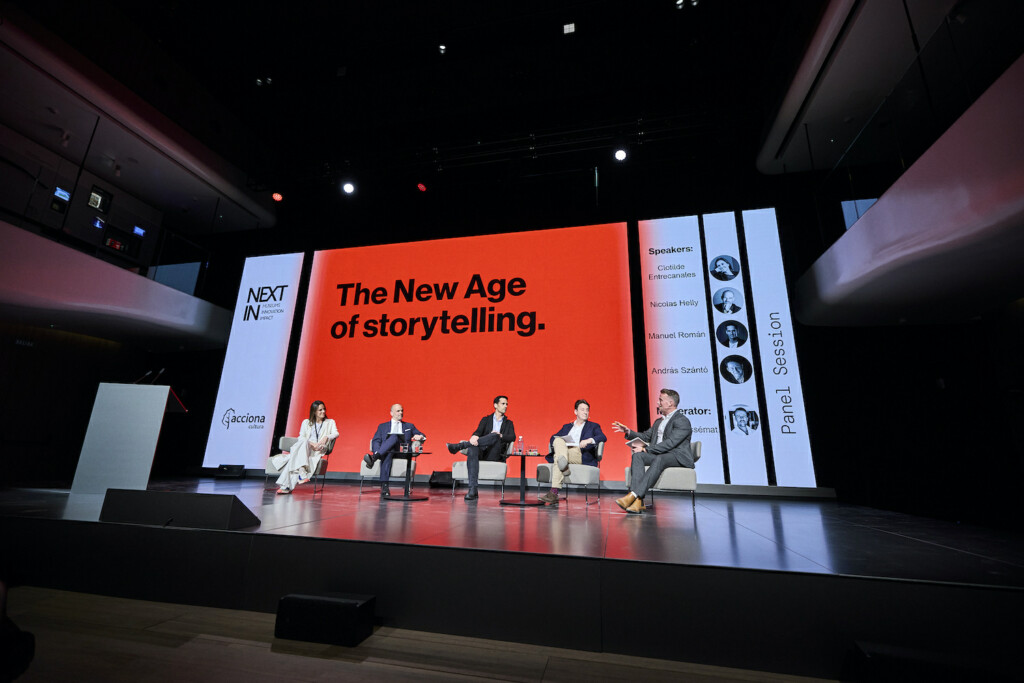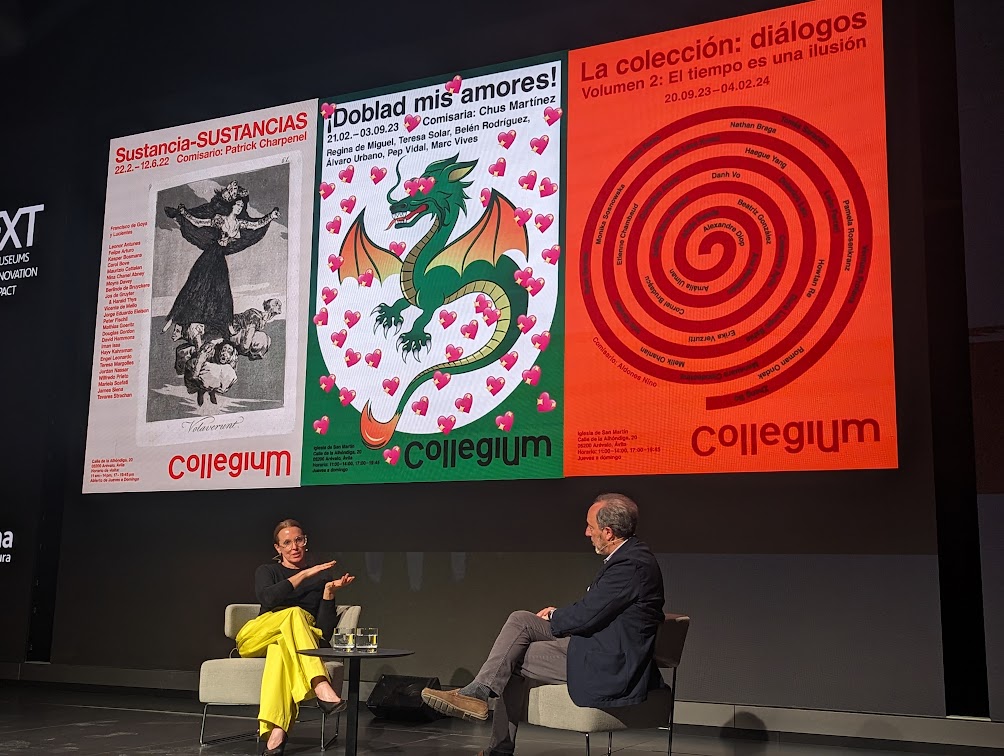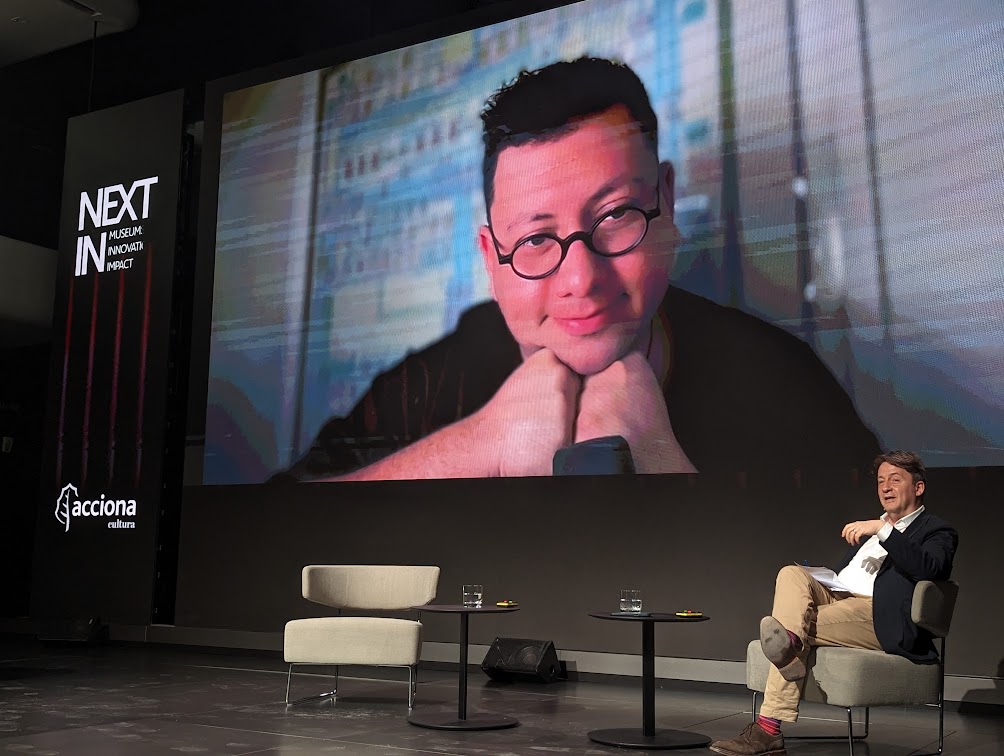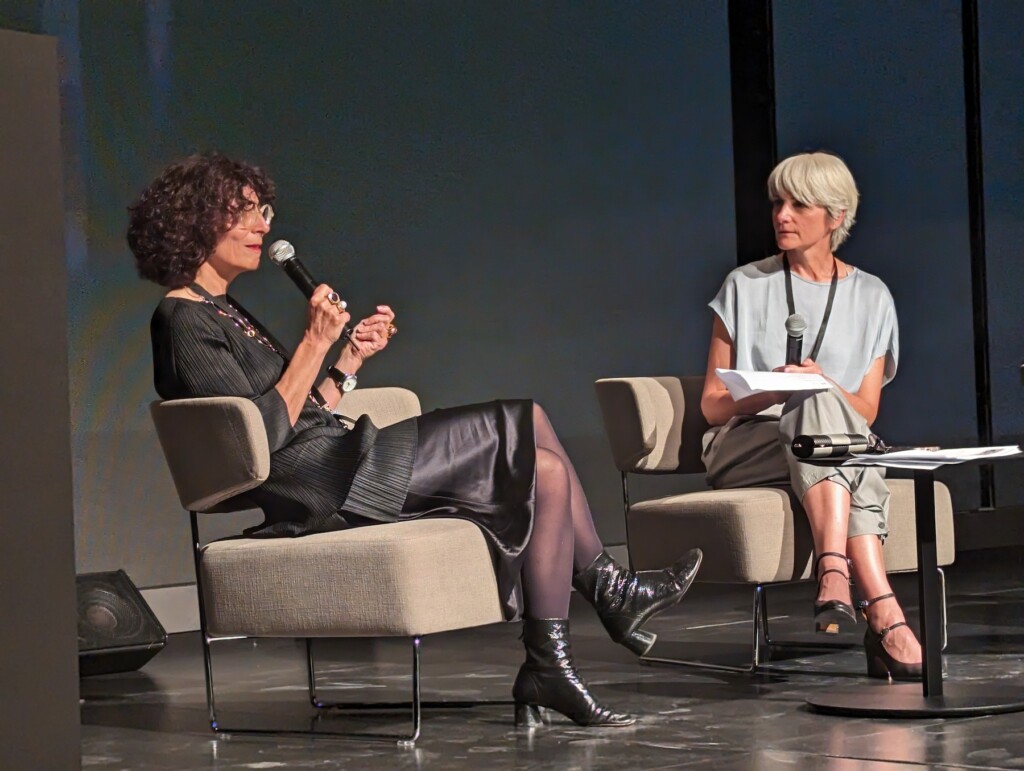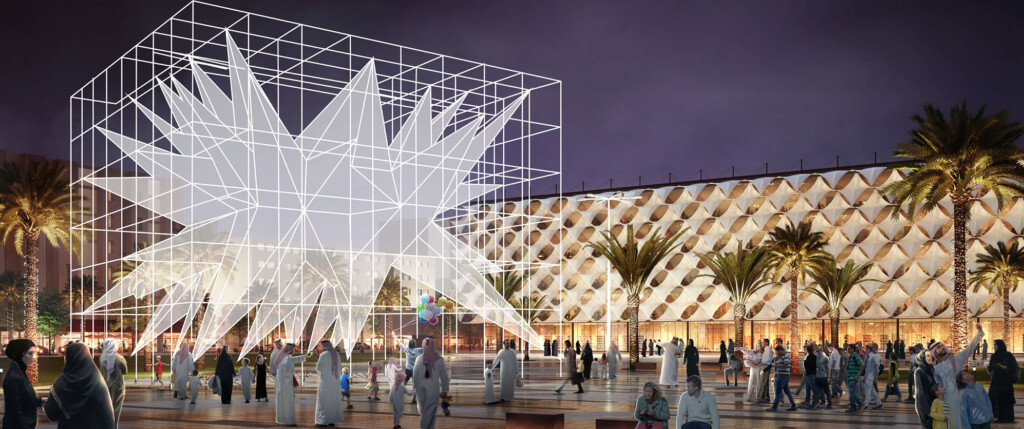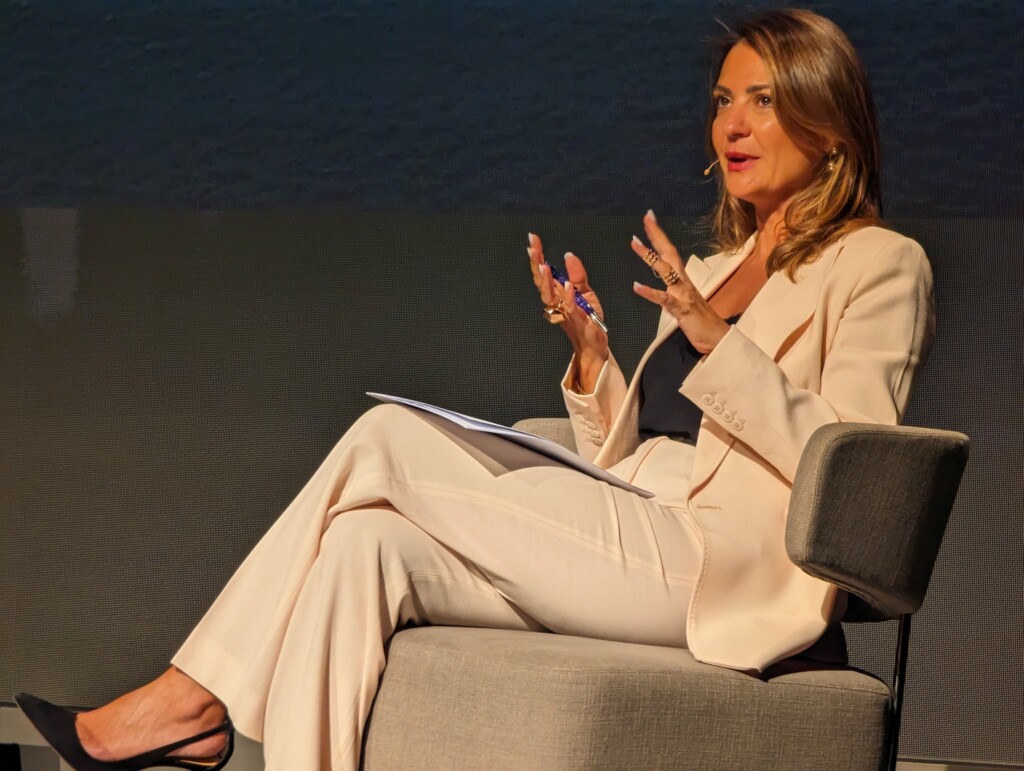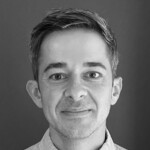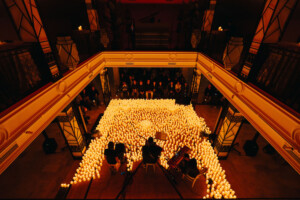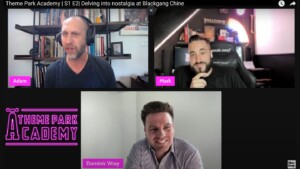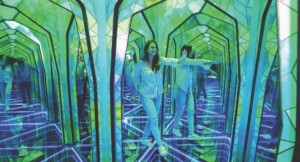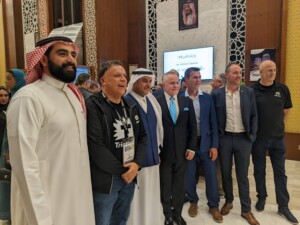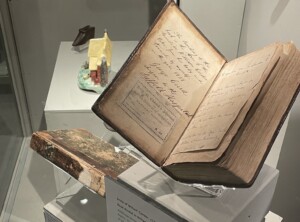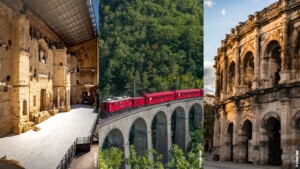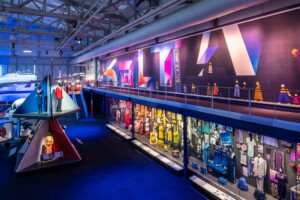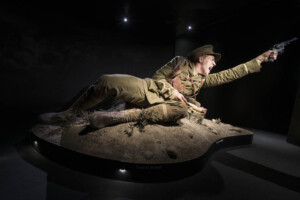
The aim of the first NEXTIN summit, which took place on 24 and 25 April in Madrid, was to “explore what comes next in museums, architecture, design, technology and sustainability”.
That it did so in spades was a testament to the hard work of the organisers, ACCIONA Living & Culture, who delivered a smooth and professional event in a relaxed and convivial atmosphere, and to the 300+ cultural and museum leaders who attended from across the world.
Museum conferences are not rare. But this stood out due to the quality of the agenda and the number of recognised industry leaders in attendance.
Along with some of the sector’s leading architects and designers, key executives from some of the world’s major museums were in attendance. Guests came from the V&A, the Prado National Museum, the Musée d’Orsay and the Louvre Abu Dhabi among others.
Venue and hosts
The host for NEXTIN was ACCIONA Living & Culture, an award-winning cultural production firm and one of the world’s leading creators of technology-driven immersive exhibits and events for museums and the cultural sector.
The venue was the campus of ACCIONA, the parent company of ACCIONA Living & Culture.
With lush, landscaped gardens, wildflower meadows and an arboretum’s worth of trees (in particular the flowering Paulownia tomentosa trees were spectacular), NEXTIN attendees were able to enjoy the greenery whilst networking and having coffee in the sun, and panel sessions and keynotes in a state-of-the-art auditorium.
Acciona, S.A. itself is a Spanish multinational conglomerate of which ACCIONA Living & Culture forms only a tiny part. It is dedicated to the development and management of infrastructure projects and renewable energy.
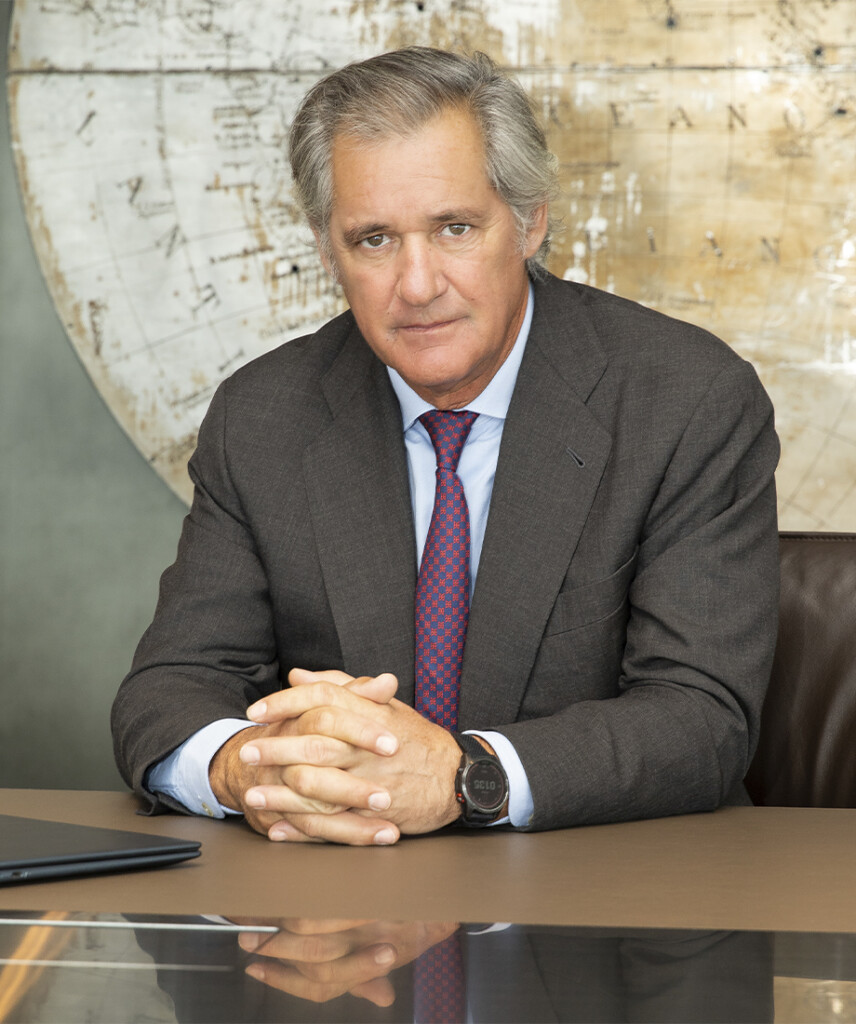
Founded in 1997, though with a history dating back to 1862, ACCIONA employs over 30,000 people and has a presence in 30 countries on five continents.
It promises a “different way of doing business” and has as its goal,“ to lead the transition towards a low-carbon economy, bringing technical excellence and innovation to all of our projects to design a better planet’.
The importance of culture
Jose Manuel Entrecanales, ACCIONA CEO, kicked off proceedings with his reflections on the importance of culture to society and the work of ACCIONA Living & Culture (a “hidden jewel” in the wider group) in the sector.
Culture is a key element of social progress, he said, “It’s a fundamental pillar of human development.” He then quoted French novelist André Malraux, “Culture is what makes man more than an accident in the universe“.
Architecture as a collective act
NEXTIN attendees heard from two prize-winning Mexican architects, Frida Escobedo and Tatiana Bilbao, who were in conversation with Michael Kimmelman, the architecture critic for The New York Times.
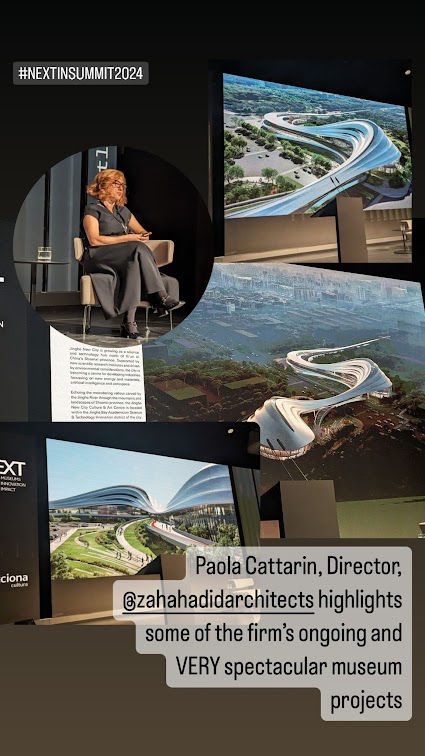
Kimmelman said, “with architecture (in the cultural sector), we are creating something that will be used, occupied, and take on a life of its own. Its goal is to inspire, but also to allow evolution. Architecture must be an act of generosity towards future generations.”
Tatiana Bilbao, principal at Tatiana Bilbao Estudio added that for her, “rather than just form, the key is the combination of what happens inside and outside the buildings; that has been a fundamental change, transforming architecture into a collective act.”
She said, fundamentally,”Architecture is a primary form of care for the body. We humans all need shelter.”
Escobedo, director of Taller Frida Escobedo highlighted “the role of museums as inclusive and equitable spaces in cities.”
Paola Cattarin, director of Zaha Hadid Architects UK showcased a number of the firm’s current projects. With 39 buildings under construction, and 70 delivered in the last 40 years, she stressed that “culture remains at the heart of the business”.
Can machines do art?
Turkish-American digital artist Refik Anadol is a pioneer in the use of Artificial Intelligence (AI) for the creation of large-scale immersive art.
He specialises in embedding media into architecture with data and machine intelligence to create public art, data sculpture and paintings.
Anadol was recently in the news as the first artist to transform the new $2.3 billion Sphere’s exterior (it’s the largest LED screen in the world) in Las Vegas into an immersive digital experience called Machine Hallucinations: Sphere.
He spoke virtually at NEXTIN about the relationship between art and innovation in a lecture entitled “Can Machines Dream of Art?”
“Every surface on earth,” he said, “every place, is a canvas”, and he asked if a machine could be taken as seriously as a human artist.
Another artist, German Mario Klingemann, (known as Quasimondo) also discussed the meaning of art. As with Anadol, he works at what might be called the “bleeding edge” of art.
A Google Arts and Culture resident from 2016 to 2018, he is perhaps best known for his work involving neural networks, code and algorithms.
Can dogs do criticism?
While Anadol considered what machines might do, Klingemann asked if robots could become meaningful artists. He pointed out that the career of his AI creation, Botto, had already eclipsed that of his own, at least financially.
It is worth noting that another AI creation, the British-born/developed Ai-Da, has already exhibited at the Tate, London’s Design Museum and the V&A. It has even written and performed poetry at Oxford’s Ashmolean Museum.
Are both Botto and Ai-Da at the vanguard of a new and meaningful movement in art?
Perhaps to forestall allegations of perceived bias, Klingemann has also developed his own robotic art critic, called A.I.C.C.A.
Looking like a cute, plush terrier with a camera in one eye, A.I.C.C.A. is based at Madrid’s Colección SOLO. It is mounted on an electric platform so it can move around the gallery. It then delivers its considered opinions on paper from, erm, underneath its tail.
Exhibtion and (narrative) designers
NEXTIN attendees were also treated to presentations from some of the world’s leading museum and exhibition designers.
“A successful project involves trust and a good relationship between the parties plus a vision, right from the start”.” said Atelier Brückner managing director of Shirin Brückner in a session with Karen Exell called “It’s a journey to make me dream.”
Maris Ensing, Mad SystemsA great trip for a host of reasons. We made new friends, exchanged ideas, learned a lot and discussed new ideas
Patrick Gallagher, president and founder of G&A delivered a fascinating and very practical session about the role of designers in museums.
He stressed that identifying the audience is vital for the designer and the museum. “Do your research, do your outreach,” he said, “and be sure you know who your target market truly is. No museum can be all things to all people”
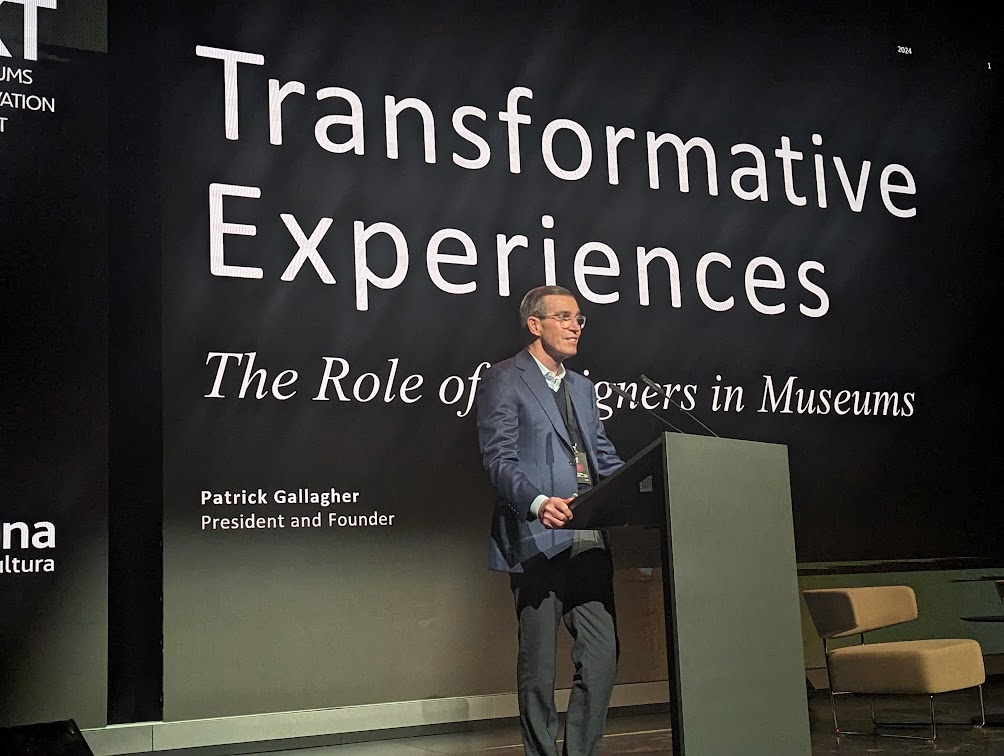
Understanding your audience will inform both “the building program as well as the museum space and functional needs”.
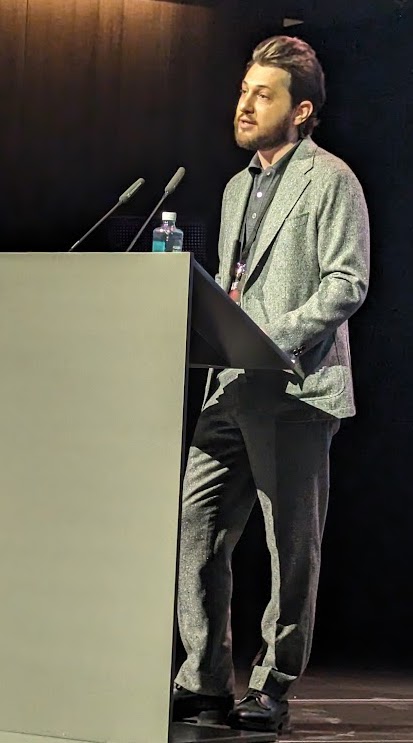
However, he said “Audience learning styles worldwide are unique and different. You are not just telling a story, you are engaging visitors in a dialogue”. Once you’ve defined your audience, it is the story that drives design.
Nick Appelbaum, president & CEO, RAA also stressed the importance of story in his session, “The next frontier of narrative design museums”.
Storytelling – narrative – is at the heart of successful museums. “Narrative museums provide a special type of learning”.” he said. “There’s a beautiful alchemy that public spaces foster which gives them a unique currency in society.”
He cautioned that “in a world full of spectacle, museums are venturing too far into fantasy. It’s a race to the bottom they will not win. The most powerful tool we have to dazzle and inspire is narrative design.”
Museums and society
A number of speakers talked about the role of museums in the community and as agents of social change. As trusted authorities, they have a position of influence and should use it.
Sarah Sutton, CEO, Environment & Culture Partners talked about sustainability.
She acknowledged that, although “It is not yet cool to be green,” we should “create a trend where everyone champions good, green work.”
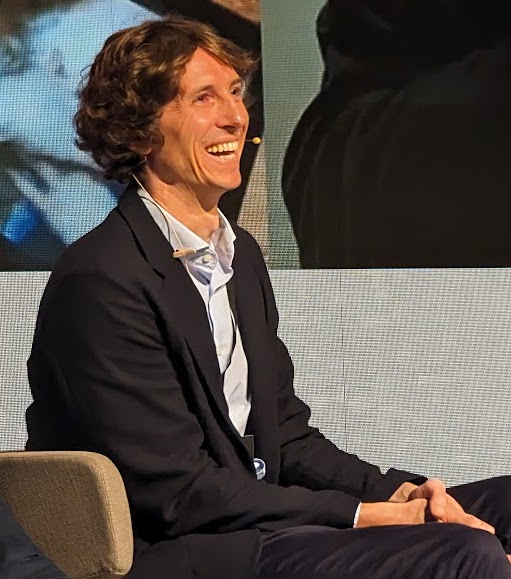
Javier Sainz de los Terreros is the Digital Communication Manager at the Museo del Prado.
In 2017, he began filming himself with a selfie stick touring around the Prado’s empty galleries and recorded videos of museum workers talking about their favourite paintings. His work reached a global audience and was featured in the New York Times.
In 2019, he designed the Webby-winning #10YearChallenge campaign at the Prado Museum.
He said that visitors and their expectations have changed, partly through social media.
“They are now empowered”, he said. “They want to take part in decision making and effect change. Museums have now become listeners”.
Museums as child’s play
Eric Langham of leading cultural consultancy Barker Langham said that museums should take risks, “challenge norms and be out there.
“Get audiences to care. Because if they care, they act,” he said.
Jens Richter, partner, estudio Herreros, whilst referencing his firm’s work at the Munch Museum in Helsinki, said “We see the museum not as a container to conserve the art, but as a place for many activities and people.”
In a session looking at children’s museums, Dr. Helen Charman, director of learning, national programmes and Young V&A at the V&A Museum talked about the unique co-design approach that her team took to the revamping of what was the old V&A Museum of Childhood.
Now the Young V&A, the museum has been co-designed with children and young people, for children and young people.
“This is about being a good ancestor. How do young people become informed, empowered civic agents?”
Immersive art and experiences

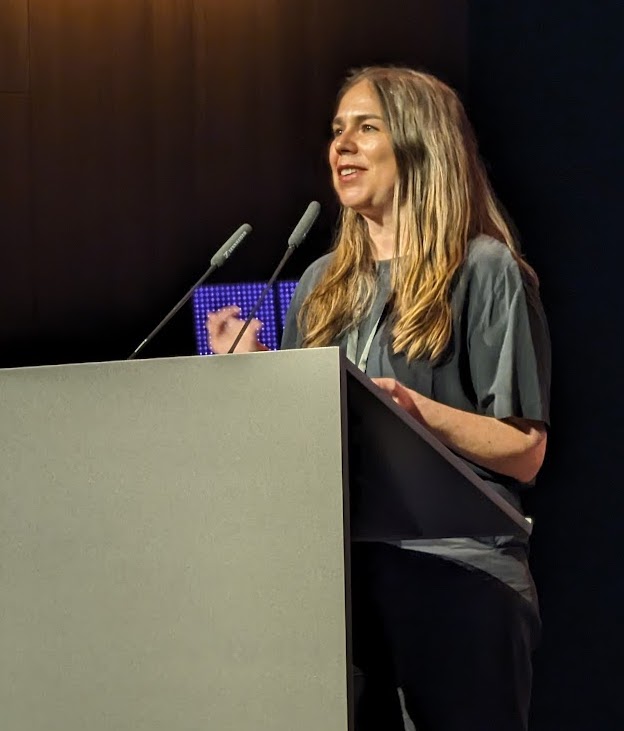
Sarah Bradley, senior creative director at MeowWolf, perhaps the most famous immersive art experience, started her session by saying that “we are not a museum”.
She gave attendees a potted history of the art collective. “It all started with a junky old warehouse.” Now, it is a visitor attraction brand that is succeeding and growing and, as Fast Company Magazine said, “offering things Disney never will”.
Bradley stressed that there is no “wrong way” for visitors to experience an exhibition. “We find guests have a more meaningful experience when they choose their own path.”

Agnès Abastado, head of digital development at Musées d’Orsay et de l’Orangerie – Valéry Giscard d’Estaing highlighted “An evening with the #Impressionists” the new VR experience at Musee d’Orsay.
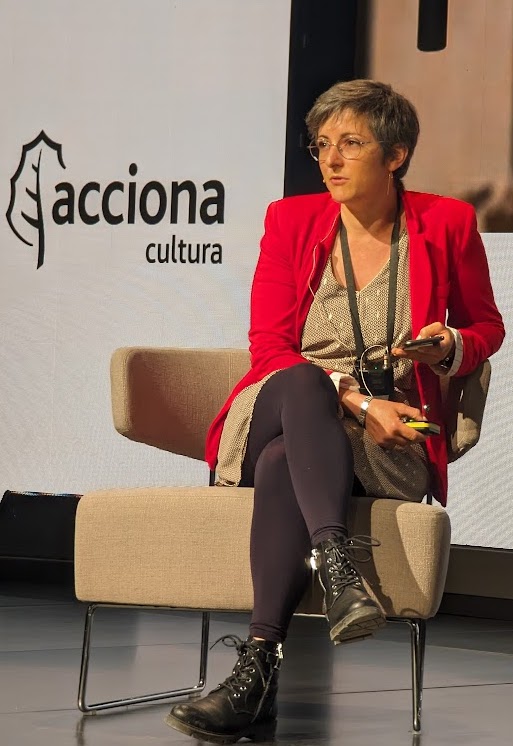
With echoes of Woody Allen’s Midnight in Paris—albeit 40 years earlier—the experience takes visitors back to 1874, a key date in art history when the first impressionist exhibition, “Hungry for Independence,” opened in Paris.
Roei Amit, chief executive officer of French digital exhibition producer Grand Palais Immersif, said, “Each new installation is a prototype for finding a balance between art and education.”
Dorothy Di Stefano is director and founder of Molten Immersive Art, ‘the node, the nexus and the connecting point of artists from across the globe’.
An art curator and creative strategist, she leads a collective of international experiential artists and researchers. She is a leading player in the rapidly evolving field of narrative-based immersive art experiences.
Her company, she explained, encourages visitors to become “co-creators of their own experiences.”
Renowned museologist Sarah Kenderdine described immersive experiences as a “luxury brand”, and said that, “Digital copies provide reservoirs of cultural memories.”
Qatar Museums
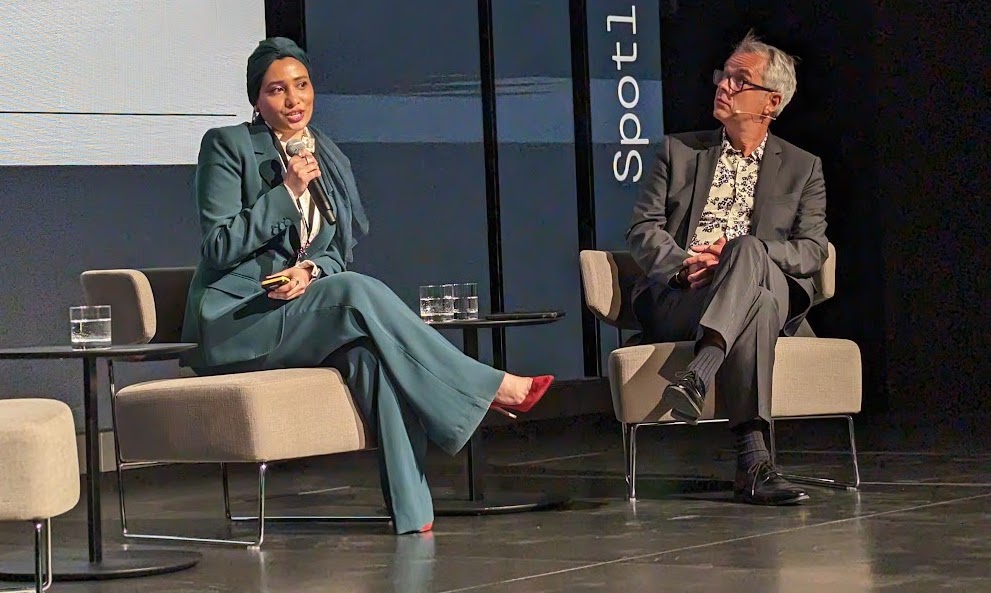
Sheika Reem al Thani, acting deputy CEO for exhibitions, and Dr. Christian Wacker, deputy director for exhibitions of Qatar Museums looked at temporary exhibitions and their role in developing visitor attendance and as “a medium of soft power.”
With a 20-year strategy of culture (which forms part of the Qatar National Vision 2030), Qatar Museums has hosted over 80 exhibitions since 2016. Wacker sees temporary exhibitions as “one of the main assets for museum dynamism and audience attraction.”
He added that the line between temporary and permanent exhibitions is becoming “increasingly blurred”.
“Our mission is to bring art to the public,” said Sheika Reem al Thani, highlighting the impact of cultural institutions on the economy and wider society.

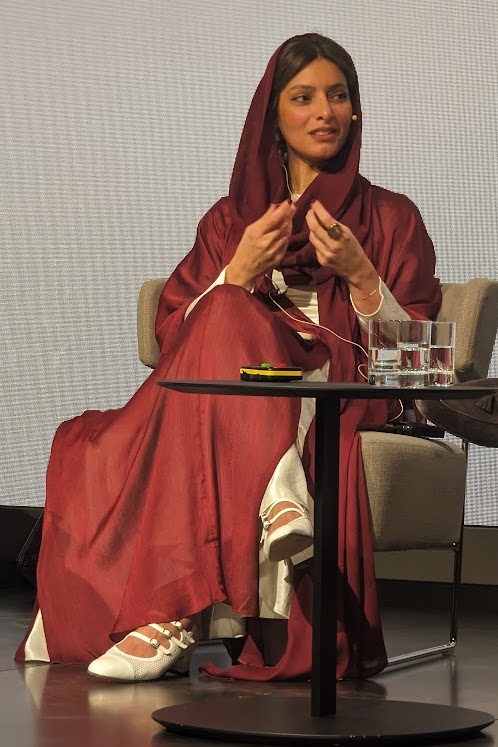
Saudi Arabia
With the rapid growth of the cultural and entertainment landscape in Saudi Arabia and its ambitious “giga-projects”, attendees had a good opportunity to learn about progress on some of the more high-profile developments.
Referring to the rapid change taking place in the country, Paul Alezraa, director of Avesta Group, said, “Saudi is extremely attached to its heritage. They are taking 5 steps at a time but still want to preserve this heritage.”
H.H. Princess Tarfa Al Saud is cultural heritage curation and programs associate director at Diriyah Gate Development Authority. She said “Diriyah (one of the giga-projects) forms a point of continuity connecting the past to an ambitious future. We are custodians of a living legacy.”
Nouf Almoneef, senior director of creative arts, Royal Commission for Riyadh city highlighted the Riyadh Art project.
As part of this, over 1,000 artworks and landmarks created by local and international artists will be installed across the city.
This project will contribute to transforming the city of Riyadh into an open gallery. It will also pave the way for a local and international creative artistic movement. Furthermore, it will engage artists from all around the world, strengthen social values, and improve knowledge transfer.

Nouf Almoneef said that this would transform the city into “a gallery without walls.”
Red Sea and Amaala
Melisa Pezuk is head of development at Red Sea Global. She spoke about the developer’s work creating two of the world’s most ambitious regenerative tourism projects, The Red Sea and Amaala.
CEO John Pagano told blooloop last year that “Sustainability was built into The Red Sea right from the start”. His team is pioneering new standards in regenerative development.
“One of my favourite sayings is that we’re inspired by nature, but we’re led by science. We came to the conclusion very early on that sustainability is no longer enough. Sustainability is, by definition, maintaining the status quo, and that’s great to a point.
“But we’re past the point of just maintaining the status quo. The world is on a terrible trajectory. As humanity, we need to start doing things that actually seek to undo the damage.”
Pezuk confirmed this, saying, “Our developments will be Gold LEED standard as a minimum with most buildings being Platinum LEED. Our infrastructure will be sustainable throughout the value chain.”
Kevin Murphy, Kraftwerk Living Technologies GmbHA fabulous range of very influential people from the cultural sectors, being frank and honest about their ideas, issues and inspirations.
Amaala, set to open late 2025 will be the “world’s most comprehensive wellness destination“.
She added that Saudi is in an ideal location too, being “8 hrs flight from 85% of the world’s population.”
Ideas, issues and inspiration
NEXTIN is a refreshing addition to the conference calendar. With decades of experience in working on many of the world’s major museum and cultural developments, ACCIONA Living & Culture is uniquely placed to put together an engaging and thought-provoking conference. It did so with aplomb.
This first iteration of NEXTIN featured genuine stars of the sector, world-renowned architects, artists, and designers. It had a packed agenda and a stunning venue. It even had two robot dogs. A Boston Dynamics one patrolled the yard, and a more artistically inclined one delivered hard-hitting criticism from its backside.
We’re already looking forward to the next NEXTIN.
